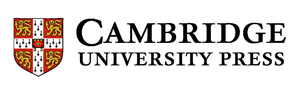Special Session SS19
28 June 2017
New Frontiers with Cluster Lenses : From the Hubble to the James Webb Space Telescope
Aims and scope
 This coming year 2017 is a turning point in terms of cluster gravitational lensing. Indeed while the Hubble Frontier Fields observing campaign, the largest investment ever of HST time for galaxy clusters, comes to an end, it is also the year of the first call for proposal for the JWST (September 2017), its successor in many ways. This Special Session is meant to bring together both lensing and structure evolution experts to discuss the recent exciting discoveries done within the field, and discuss future prospects with the JWST.
This coming year 2017 is a turning point in terms of cluster gravitational lensing. Indeed while the Hubble Frontier Fields observing campaign, the largest investment ever of HST time for galaxy clusters, comes to an end, it is also the year of the first call for proposal for the JWST (September 2017), its successor in many ways. This Special Session is meant to bring together both lensing and structure evolution experts to discuss the recent exciting discoveries done within the field, and discuss future prospects with the JWST.
Gravitational lensing is one of the most powerful tool to trace the dark matter distribution, study assembly processes, and thus test evolution theories. While lensing allows us to measure the dark matter content of the lenses, free of assumptions regarding their dynamical state, it also provides a unique spatially resolved view of the lensed objects themselves. Their importance has clearly appeared in recent ambitious programs implemented with the Hubble Space Telescope, with the CLASH multi-cycle Treasury project, the GLASS program, the recent "Hubble Frontier Fields" (HFF) Director's initiative, and the RELICS program.
Since the first discovery of a strongly lensed arc in Abell 370 at the end of the 80's, cluster lensing has provided major scientific breakthroughs in both cosmology and physics of galaxies, including the discovery of the most distant known galaxies in the Universe. These large HST programs have provided unrivaled datasets, complemented by many follow-up observations from most of the world's large telescopes (multiwavelength studies, IFU and high resolution spectroscopy).
Massive cluster lenses act as 'Cosmic Telescope', offering a unique glimpse to distant galaxies, thanks to the large magnification factors produced over wide areas.
With the HFF, we have now reached an era of high-precision in terms of magnification measurements, thanks to very precise mass models. The distribution of dark matter in galaxy clusters can now be mapped down to 1% precision, revealing the amount and distribution of substructure, and allowing for a better understanding of magnification bias and line-of-sight projection of the lensing mass thanks to essential tests run with state-of-the-art numerical simulations. With such an observational tool, we can now measure cosmological parameters using cosmography, or observationally test LCDM looking at the amount and distribution of substructures for example. In turn, well-calibrated clusters as gravitational telescopes allow us to observe the faintest galaxies, well beyond the observational limits of current instrumentation.
HST campaigns have also discovered spectacular lensed objects, like a multiply-lensed z~11 galaxy - the highest-redshift galaxy ever detected, or the Supernovae Refsdal, the first example of a lensed supernovae with resolved multiple images. The future is even more promising for lensing clusters with the HST treasury program RELICS, the EUCLID mission expecting the discovery of thousands of them, and the James Webb Space Telescope (JWST) giving us a unique deep and multi-colour dataset.
Following the great success of our Symposium at EWASS 2016, and the key turning point 2017 represents, we propose to bring together again both lensing observers and modelers to discuss these latest developments to optimize the scientific returns of JWST. The timing of this meeting is optimal as the HFF observations are now over, the last cluster mass models being delivered to the community just after the meeting, and the first call for JWST proposal in September 2017.
Programme
This Special Session will be splitted in 3 Sessions, with an aim to address the main problematics faced with Cluster Lenses nowadays.
- Session 1: The Mass Distribution & Physics of Galaxy Clusters
- Session 2 : Gravitational Lensing & Cosmology
- Session 3 : Transients with Gravitational Lensing
Invited speakers
- Johan Richard (CRAL, France)
- Steven Rodney (University of North Carolina, USA)
- Keren Sharon (University of Michigan, USA)
Scientific organisers
- Mathilde Jauzac (Durham University, UK)
- Jean-Paul Kneib (EPFL, Switzerland)
- Hakim Atek (IAP, France)
- Marusa Bradac(UC Davis, USA)
- Jose Maria Diego (Instituto de Fisica de Cantabria, Spain)
- Richard Ellis (ESO, Germany)
- Matt Hilton (UKZN, South Africa)
- Eric Jullo (LAM, France)
- Richard Massey (Durham University, UK)
- Kavilan Moodley (UKZN, South Africa)
- Priyamvada Natarajan (Yale University, USA)
- Keren Sharon (University of Michigan, USA)
- Ian Smail (Durham University, UK)
Contact
Please contact Mathilde Jauzac if you have any questions regarding this Special Session.
mathilde.jauzac @ durham.ac.uk
Updated on Wed Mar 15 22:08:11 CET 2017
|

 A power cut will shut down all EAS services on Tuesday, 10 January 2017 starting at 7:30 CET.
A power cut will shut down all EAS services on Tuesday, 10 January 2017 starting at 7:30 CET.




















